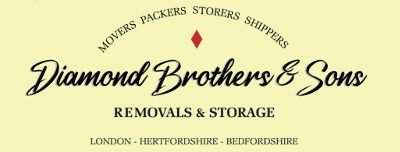
Diamond Removals: Helping You Move Home
Help Moving Home
Diamond Removals has you covered with every aspect of your move.
Read below all of our help moving home tips, to make sure it all goes smoothly.
Things To Consider
Think ahead.
If you know you’re likely to be moving, get moving quotes as early as you can.
Being able to assess your needs and prepare in advance, you’ll have a clearer idea of the service that suits you.
Plan ahead.
Sometimes getting a quote can be hard to arrange but you know you can send us a video tour of your home to get an estimate and don’t worry about security – we secure your videos and destroy them once the move is concluded.
Book ahead.
You can book in a move date with us once you have had your home survey.
If you need to move or cancel it, provided we have sufficient notice, there is no charge.
Look ahead.
Once you are happy with your selected move package, you can rest at ease knowing that your belongings will be moved by the professionals.
If you do not find the kind of advice you are looking for, let us know and we’ll do our best to help.
Planning Your Move
The key to planning your move, is to think about all the aspects well in advance of having to actually do them.
There may well be the odd on-the-day disaster, but planning your move will help keep everything in check and help you keep your cool if something does go wrong.
Arrange your move date as far ahead as possible.
The more time you have, the easier it will be to actually get everything done in time.
Another good reason for having everything prepared in advance, is because if you have to postpone your move for some reason, it can be costly and rescheduling everything at the last minute will not be easy.
Take the opportunity to save a huge amount of money by hunting around for better deals, and cancelling anything you don’t want.
Moving house is also a good time to turn over a new leaf.
The more organised you are, the quicker you can start afresh after your move.
You shouldn’t move everything you own.
It not only costs more money, it takes extra time.
Make things easier by eliminating unnecessary items.
No matter what it is – that big jar of pennies, the rowing machine you stopped using, the toys your kids have outgrown.
Don’t move it if you don’t use it!
So how does it all go?
Well, ideally you will have at least a month to your move date.
Here’s a typical plan:
1: Help Moving Home - Kitchens
Since this is the busiest room in the house, it is usually left until last.
That can lead to hazardous packing, so start with all those things you rarely use – especial china, the Christmas platter, that big coffee pot.
Get them out of the way early, and you’ll cut down on the size of the job later.
Get together all your dishtowels and potholders; use them for extra padding.
Pack plates standing on their edges- never flat.
“Nest” bowls, cups and glasses inside each other after wrapping.
Be sure to fill any empty spaces with appropriate packing material.
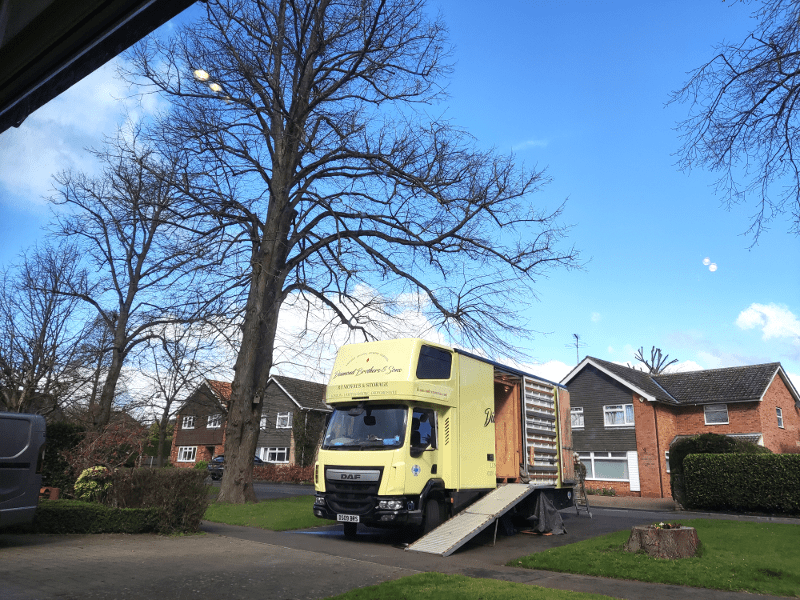
Think twice before you move any opened food containers.
With spices and grains, first, consider their age.
If you’ve had them for a year or more, don’t take them.
If you must take opened containers, tape them shut securely and enclose in plastic bags before packing.
Appliances should be clean, dry, and disconnected for moving day.
This means defrosting and airing freezers and refrigerators and contacting the gas company to disconnect any gas appliances.
Internal motors must also be secured.
Your removal crew can prepare your washing machine for moving, and then reconnect it.
If you come upon appliance operating instructions while packing, tape them to the inside of the appliance.
Otherwise, they could easily be misplaced.
2: Help Moving Home - Lounge And Dining Rooms
Delicate crystal, china and bric-a-brac need extra protection.
Consider boxing some things up before putting in packing containers.
If you seal napkins and tablecloths in plastic bags, you can use them for additional padding.
Make sure everything is snug and mark the boxes FRAGILE.
If you have fine silver, avoid discoloration by making sure it is clean, and don’t wrap using rubber bands.
If you have a case for it, fill in all the empty spaces with soft cloth or tissue, seal shut with wrapping paper and tape and then wrap in towelling.
Otherwise, wrap each piece in soft cloth or special silver paper before packing.
This will protect it from tarnish and scratches.
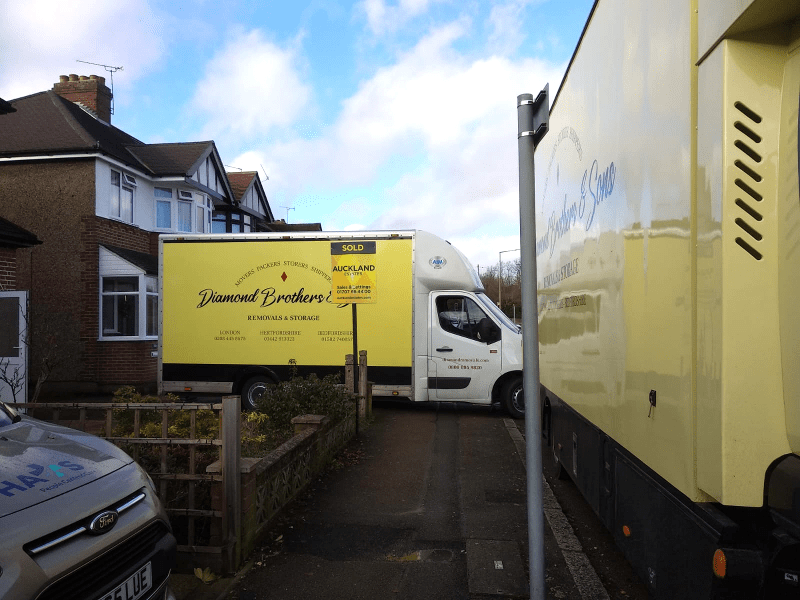
Mirrors and framed pictures need to be packed in cardboard that you can obtain from your mover.
Lamps should be taken apart, bulbs removed, and the shade wrapped carefully and boxed.
Use the right size box and DON’T USE NEWSPAPER for packing.
Use as little paper as possible to avoid denting.
Dried flower arrangements should get the same treatment as lampshades, and make sure to label the boxes with THIS END UP.
Electronic equipment should be moved in original packing cartons when available.
Secure all parts prior to packing.
If you are moving in the summer, the heat can damage certain items.
Candles, CDs, records, tapes and floppy disks are all at risk.
Consider taking them yourself, or shipping in a way that will reduce transit time.
3: Help Moving Home - Bedrooms
When planning your move, clothing can either be folded and packed, or hung in wardrobe cartons.
(These will be available on the day).
Try to keep out-of-season or special occasion clothes together.
When unpacking, you’ll be able to leave those for last.
Dresser drawers may be packed with lightweight clothing, but be sure to remove any liquids or breakables first.
For conventional beds, strip beds completely, but leave them assembled.
They will be dismantled by the moving crews, and reassembled at your new home.
If you have a waterbed, empty it the day before the move.
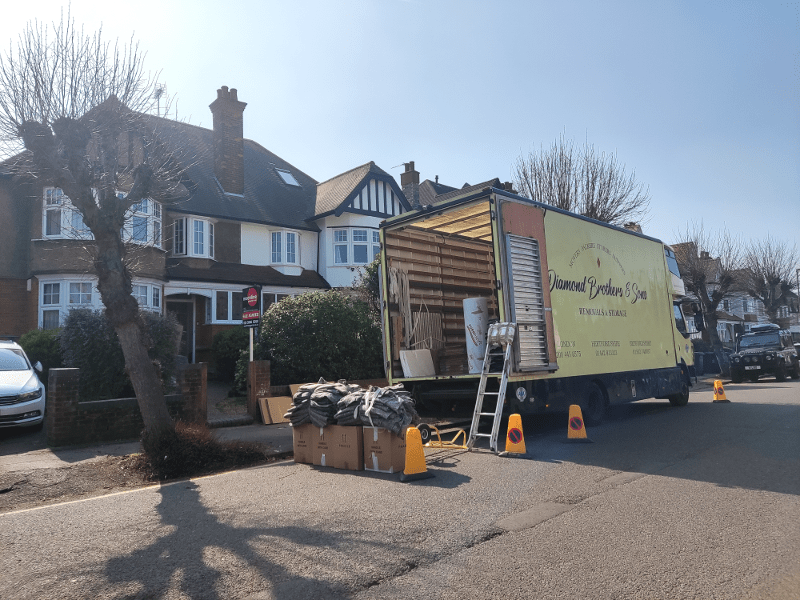
For canopy or “four poster” beds, there may be an additional charge for dismantling and assembling.
Toiletries that are flammable or aerosol cannot be moved in the van, so you should throw them out or take them with you.
Packing For Your Move
So you’re moving and planning to do the packing yourself?
Great!
Some people use this as a good time to declutter while packing, which in turn could save you money having less stuff to move.
Being organised and allowing plenty of time to pack before the removal day is the key to success.
Making Up And Sealing The Boxes
If you’re using our boxes, tape them using two lengths of tape.
The first through the middle and across the seam to hold the box together, the second along the seam to seal the box.
Do the same on the top of the box and write across the tape, using a permanent marker, the room where the box is to be placed.
Include a brief description of the contents eg. Bathroom (toiletries), Living room (sofa cushions and hifi), etc.
Mark the appropriate boxes ‘FRAGILE’ to ensure careful handling and loading.
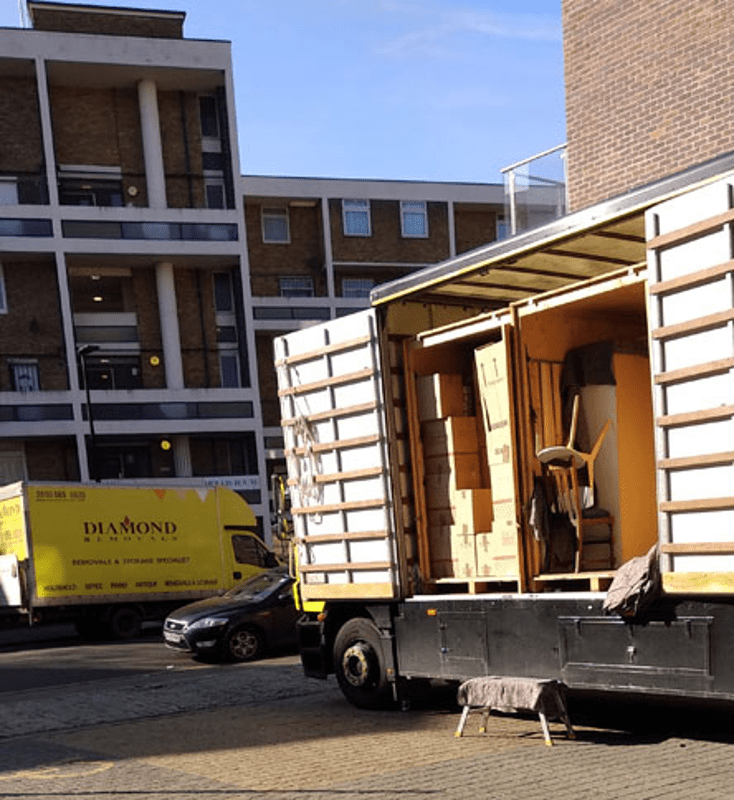
What Box To Use For What
Small Boxes
- Heavy, small items such as records, tins, bottles, cutlery, heavy food (rice, sugar etc) and heavy ornaments.
- Long stemmed glasses, delicate ornaments, very fragile china, glasses and small pictures.
Books, for the most part, should be packed flat.
They may be packed on their edges, but never with the opening facing downwards as this may break the binding.
Pictures and records should be packed on their edges.
Make sure that bottle tops are tight and pack bottles upright.

Medium Sized Boxes
- Do not overfill the boxes; keep them square and in shape.
- When packing china plates they should be placed on their edges, never flat, on the bottom of the box in batches of three or four, with paper between each plate.
- When the bottom of the box is covered, continue filling with heavy china, Pyrex, mugs, bowls, vases etc.
- On top of this, place glass and china. Pack glasses upright.
- Fill the boxes to capacity using soft items such as pillows, cushions, towels, cuddly toys, etc to take up any space on top. It is also a good idea to place soft items between each layer of china.
These are the most commonly used boxes, and are used for most other household effects such as pots, pans, glass, china, ornaments, pictures, clothing, food etc.
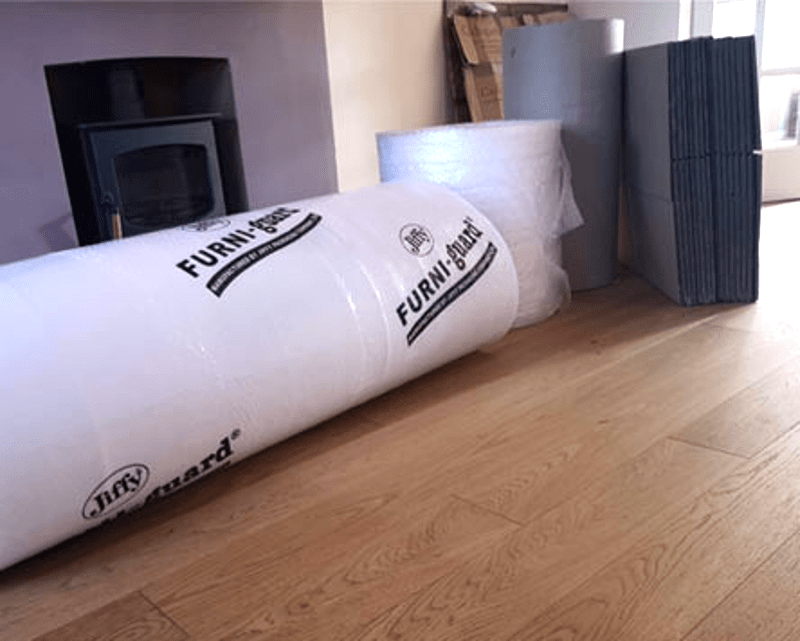
Large Boxes
- Keep back sufficient large boxes for packing of bedding in current use.
- Lighter items such as clothing, light linen, shoes, bedding, toys, board games, light pots and pans.
- Mark boxes accordingly ie. BED 4, Clothes, this will ensure they are easily identified for making up beds at your new home.
Remember: when packing fragile items, always put a layer of padding at the bottom of the box.
Do one even layer of breakables, then put another layer of padding, then do another layer of lighter breakables.
Finish off with a top layer of padding all the way to the top of the box.
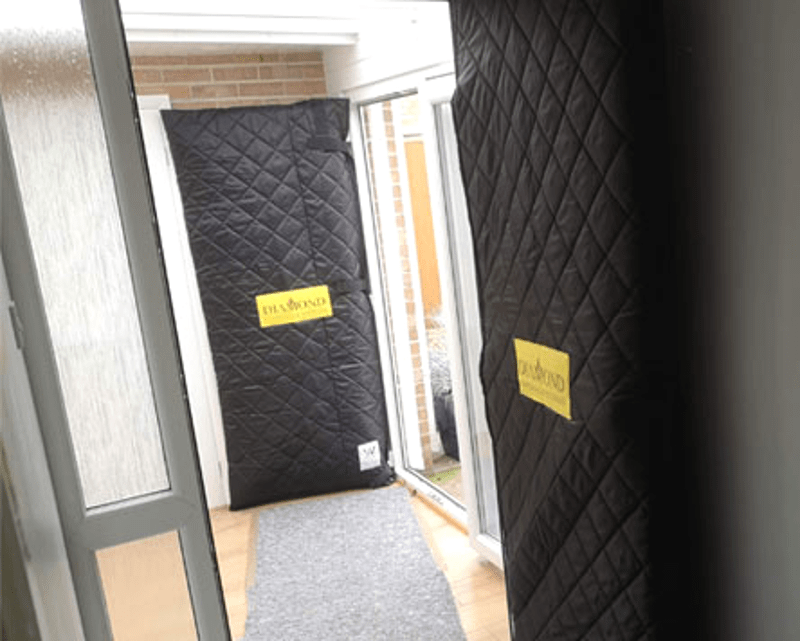
Help Moving Home: Parking Arrangements
You will find that moving in and out requires additional unfettered access to your property.
This is where parking arrangements are required.
If you are moving in/out of London or any other town or city where parking controls are in place, we’ll need to organise this to avoid any unpleasant surprises.
If you currently manage your parking permits online, simply login to your gov.uk account and arrange your parking dispensation.
Otherwise, contact your local authority.
In certain cases, we can on your behalf manage your parking for a £40 charge.
This is dependent upon the individual and their circumstances, so get hold of us to find out.
For the disabled/impaired and elderly, we will do this free of charge.
Enquire with us to see how we can help you with this.
Help Moving Home By Decluttering
Often overlooked in moving home, are the things never seen on a day-to-day basis.
It is hard to decide what to keep and what not to when we find them.
This applies particularly to the forgotten things in the loft.
And while you’ve managed up too now to avoid that task of decluttering, there’s no escaping it now.
It has to go somewhere, so consider decluttering as soon as is practically possible.
- What is useful and should it really be kept
- Your keepsakes and sentimental items
- The value of the stuff you simply won’t throw away
- Vinyl record collections, musical instruments, photo albums
- What you could dispose of or recycle or even sell.
Make sure that your Move Surveyor is aware of the items in your loft/basement.
Upon inspection, we can make an estimate on removing and packing the contents – but please try to bring them down so that we are not spending too long packing them all up.
Hopefully you’ll have already packed them while they were stored away.
Be Honest With Yourself
It isn’t easy to dispose of all the belongings you’ve accumulated over the years.
Looking through it all, you’ll know soon enough why they are there – ‘that might be handy one day’ or ‘I just can’t bring myself for chucking it’, all typical.
So be honest about what and why you keep what you decide to keep.
Tales Of The Unexpected
Over the years of moving, we’ve experienced some touching stories.
We once found a forty-year-old primary school maths jotter in the loft of an owner, and being a Maths Teacher he was thrilled to bits.
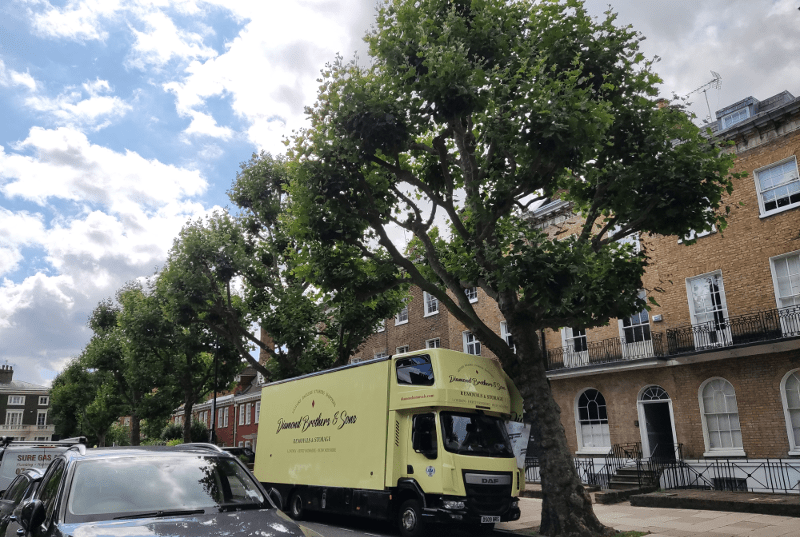
He decided to keep the other twelve, so we packed them up for him.
On another occasion elsewhere we found the vintage Fender Stratocaster of an old pro, and the owner simply said “take it”.
We offered it to the son of a friend, and eight years later the lad plays in his own band!
The take-away here, is to consider what might become of the person receiving the item, rather than what you may or may not do with them.
Be Ruthless
Most of the time, we find that the elder movers are typically the make-do-and-mend sort.
Profligacy is an alien concept to them.
Keeping those old curtains, those old stereo units, skis last used twenty years ago and voyeuristic costumes not worn twice, are likely things you can live without.
So be ruthless, and unless you’re planning what happens to them later in life, declutter as ruthlessly as you can.
It could make your next move far easier.
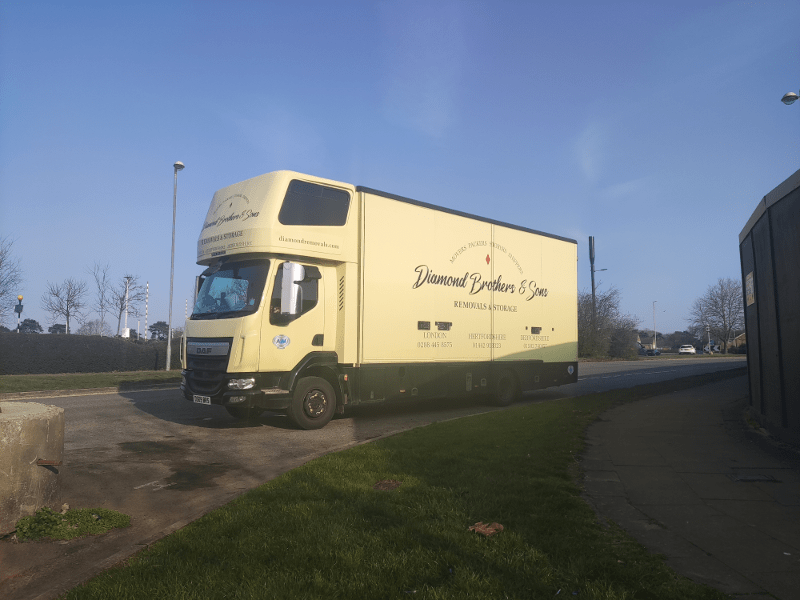
Box Clever
Divide items out into a few categories, and plan their fate.
You can try these;
- Sell items of value on eBay or on Marketplace
- Give inspirational/practical items to family members or friends (like that guitar)
- Offering items for free on sites like Free cycle
- Donating items to charity shops
- Recycling at old clothes banks or at your local authority’s recycling centers
Whatever you do when decluttering, take your time.
Because there is quite often a trip down memory lane in between finds.
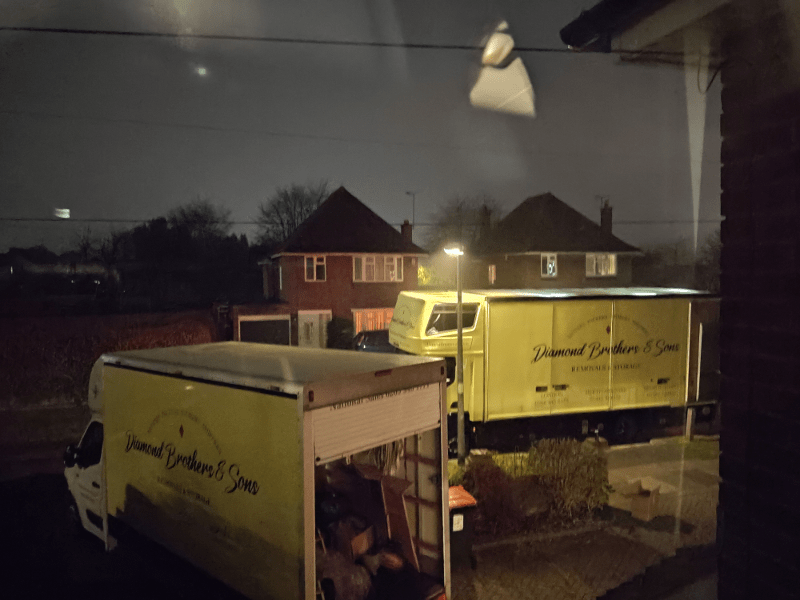
Storing Your Items
When storing your items, check that all personal papers and documents are retained by yourself prior to putting your possessions into storage.
Should you require access to your stored items, this can be arranged at a small cost.
With regard to appliance items such as cookers, washing machines, fridges, and/or fridge freezers, these should all be disconnected prior to moving day.
This can be arranged through our freephone number.
Please confirm if you wish to book this service by going to our contacts page.
Fridges and Freezers should be washed out with detergent to avoid unpleasant odours.
They should also be dried thoroughly.
Long Term Storage
Washing machines and dishwashers must be completely drained of surplus water.
Damp, mildew, and seizure of component parts can occur when these appliances are not used for a considerable length of time.
Even when our own storage space is fully taken up, we do our very best to find you the best deal for your requirements.
Self Storage
Boxes should be filled to capacity to avoid them tipping or collapsing.
Use bubble wrap to fill gaps.
Use smaller boxes for heavy items so that they are easy to lift.
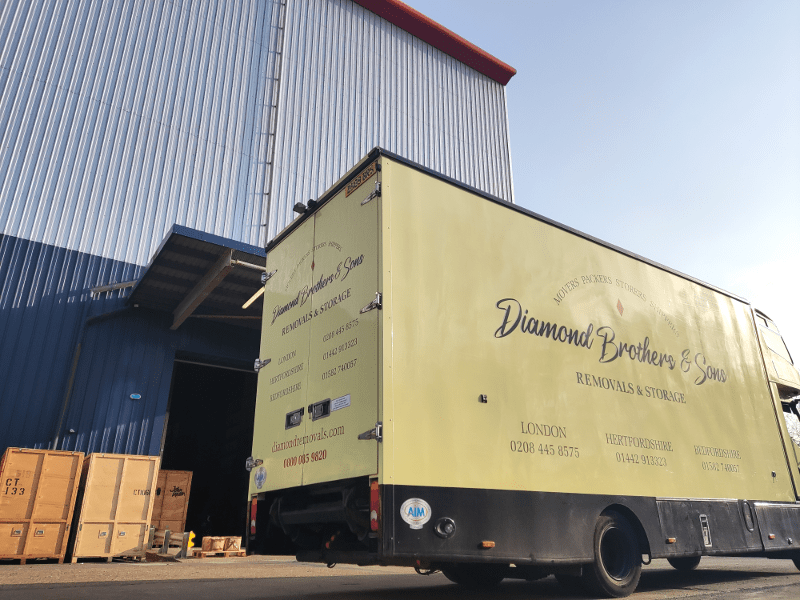
Top Tips
- Individually wrap crockery, glasses, and fragile items in bubble wrap before storing.
- Label or number your boxes. Also keep an inventory of your items, for easy reference.
- Wrap pictures and mirrors individually in bubble wrap. Mark them as fragile and stack them on end.
- Drain freezers, refrigerators (wipe the inside surfaces with bicarbonate of soda), and washing machines prior to storage. Make sure you store these items with the door wedged open.
- Garden equipment should be cleaned and dry. Wipe metal surfaces with WD40 or similar, and drain petrol and diesel from machinery before storing.
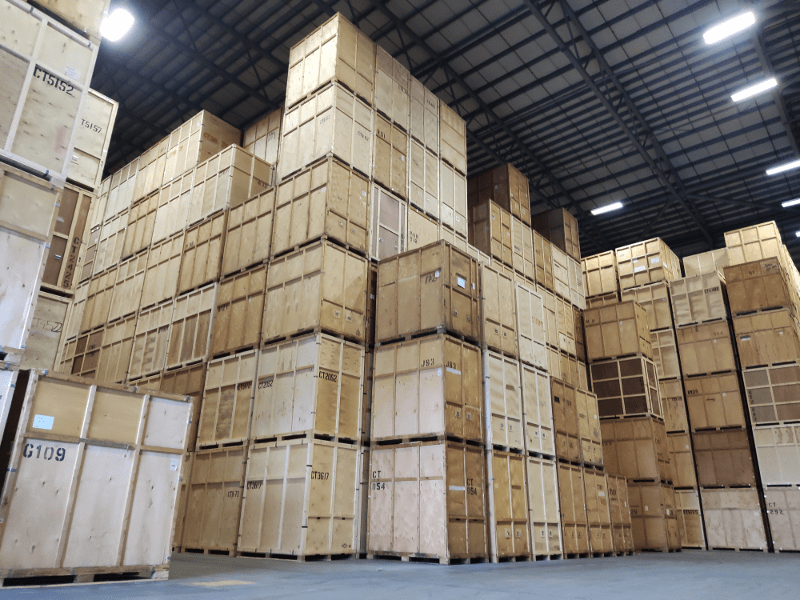
- Ensure that no sharp edges protrude.
- Place a dust sheet on the floor of the room. Put bulky or heavy items in first. Stand sofas and mattresses on end, leaving an air gap between items. Do not stack or lean anything against walls.
- Remove legs from tables. Wrap the top in blankets and stand on end, or lay them on blankets top down with legs pointing up. Stack chairs ‘seat to seat’.
- Lay dust sheets for protection over your goods and soft furnishings. Do not place heavy items on sofas or mattresses.
- Maximise available space by stacking similar sized boxes together. Items that you will need to get to frequently should be stored close to the door for easy access.
- Heavy equipment should be put on a pallet for easy removal.
Help Moving Home Offices
Moving home is one thing, but having the additional task of moving home offices is quite another.
Many people working from home want a smooth transition.
It is absolutely imperative that your move is just that.
Here are a few tips to bear in mind.
Keep Everyone Informed
One of the primary concerns with moving a home-based office is in regard to telephony and internet access.
Well before your move (at least two months if possible, a month at least), tell your people; internet service providers (ISP’s), web hosts, telephone firms.
You may have to open up a new account (and probably a new contract period) with ISP’s and telephone companies in particular, so be prepared to have two services running in overlap for maybe a week while you get things set back up.
Do check with your suppliers to see how they will minimise the time you are without those services.
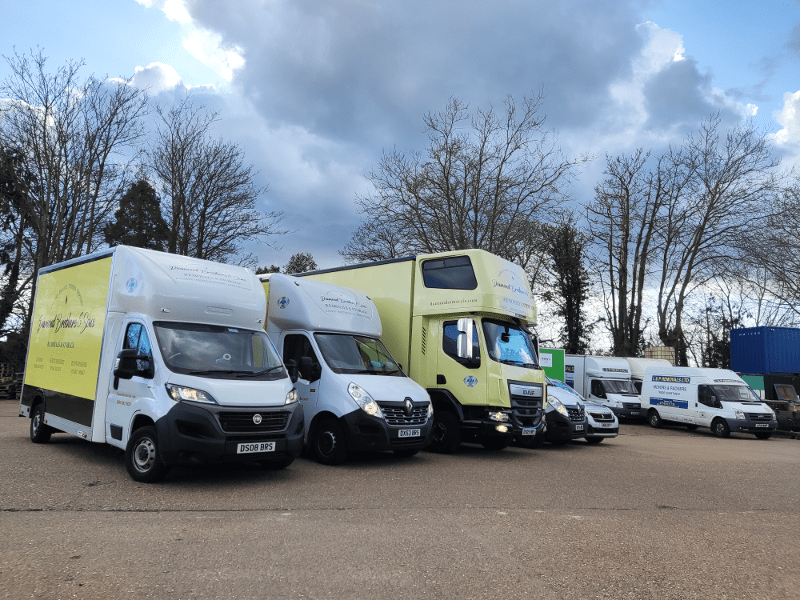
Inform your clients and customers in writing well in advance and ensure that you have taken sufficient time off for the move and remember to update your stationary (have it printed as soon as you can) and your web site to inform people of your period of unavailability and due return date.
Also, ensure that any e-commerce and trade accounts in use (i.e. Amazon, Viking Direct, Ebay) are updated.
A mail redirect service is a good idea so you are sure to get any mail sent to your old address is received.
Packing
Provided that you have a relatively well organised office, it is recommended that you pack and label your boxed/packed items as they would be placed.
(i.e. Office: Desk items, Office: Bookcase, etc).
Doing this means we can place packed boxes close to where they should be, and you’ll find it easier and faster to get unpacked and re-organised.
If you still have packaging for items such as computers and monitors, use them.
Pack away everything other than what you need to keep online and in touch.
Keep available any overlapping work and project files so that you can respond to urgent enquiries should you need to.

Technology
Pulling cables out of their corresponding slots is simple but make sure you make a note (or take photos) of how they connect up again – it is all too easy to overlook something especially if you have a large set-up.
This might sound like overkill but think about it; even if you are moving your own computer equipment, a knock or shunt could cause unforeseen complications when firing up again.
One should be in the habit of backing up data periodically, and a move is as good an excuse as any to do it.
Back up on to a separate external drive if you have one.
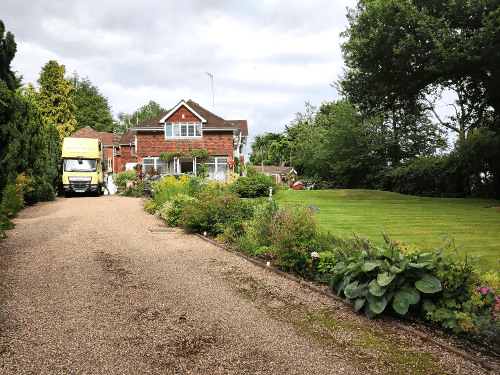
Consider how you manage your down-time.
If you have the ability to ‘soft-close’ or shut down for a week, do so.
If you work on laptops, this part will be quite simple but given the effort required in moving home, give yourself as much time off as is needed to see it through.
For those that work primarily or solely from home, moving your home office tends to work best when moved out last and moved in first.
The downtime is short and we’ve found from our customers that it isn’t as easy to do it the other way around.
We advise not moving heavier items – let us take care of that.
After all, it’s not worth putting your back out and missing out is it?
Discuss you move with us, and we’ll help each other arrive at an efficient, practical and workable solution.
This will get you in a position to return to doing what you prefer to be doing.
Help Moving Home With Children
Our children are amazingly adaptive to change, but moving home isn’t always something they cope well with.
Moving home can be one of the most stressful times in your life.
Although the reasons for moving home are usually positive, for example, a larger property or a new job, the actual move itself can be traumatic.
Adults can usually adapt to their new circumstances fairly quickly, especially if they are already familiar with the area.
For children, the move can be less easy and they may not adapt so quickly to their new environment.
However, most children do learn to love their new home and eventually see the benefits of the move.
Here are some suggestions for helping children feel at ease with moving house.
Top Tips
- Be honest with your children. As soon as your move has been confirmed tell them about it and explain the reasons for it.
- Be positive. Even if you have some doubts about moving make sure that you emphasize the positive aspects. For example, tell them they will be living near the sea or country, or in a city that is filled with exciting places to visit.
- If possible, take the children to see the new house and ask them which bedrooms they would like. If your children are old enough, let them choose how their room will be decorated.
- Let them help you to pack up the old home. Give them each a box and ask them to pack some of their possessions.
- Encourage children to talk to their friends about the move and to swap addresses, telephone numbers and email addresses.
- Once the children arrive at the new address, allow them to telephone their friends and tell them about their new home.
- Contact organisations that your child has been involved with. Visit local leisure facilities such as the swimming pool and cinema.

Help Moving Home With Pets
Here are some suggestions for helping your pets feel at ease with moving house.
Top Tips
- Try and keep to your usual routine as much as possible. Make sure pets are fed and exercised at the same times.
- On the day before and during the actual move, only give your pet easily digestible food and water. This will help to reduce the risk of vomiting and diarrhoea.
- Make sure your pet has an identification collar, tag or leg band.
- Take your pet to the vets for a physical examination. If you have a nervous pet, you may consider using tranquilizers for the move.
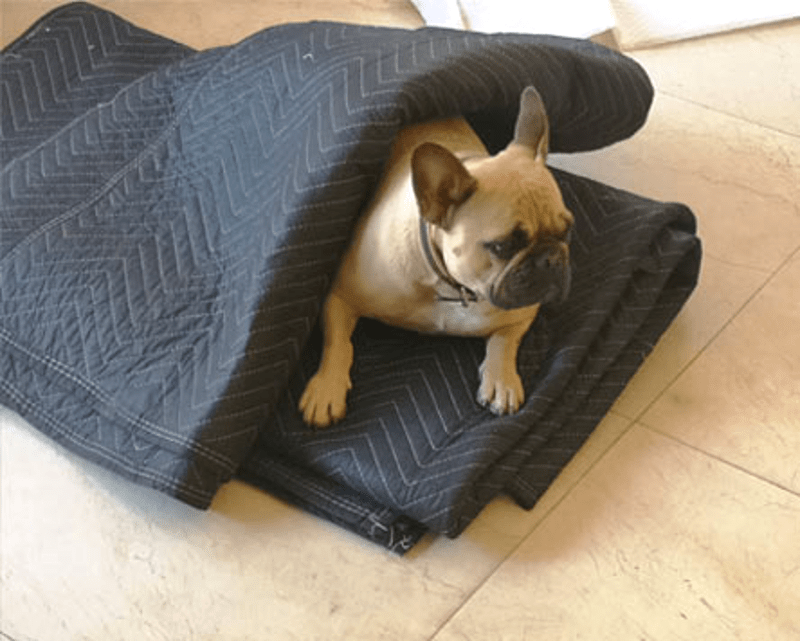
- Avoid temperature extremes. Try and ensure that your vehicle is neither too warm or cold as this may make the animal stressed or ill.
- Once you arrive in your new home, keep your pet locked in one room before releasing it into the rest of the house. This should allow the pet to acclimatize. Make sure your pet has water, food, a litter pan and some toys.
- Cats are particularly sensitive to moving house. Use a strong cat carrier to transport your cat. It may be necessary to lock the cat indoors for several days before being allowed outside. This will reduce the risk of your cat running away and trying to find its old home.
- If you are moving other pets (fish, reptiles, birds, etc) consult your supplier and/or seek professional advice on how best to move them.
Help Moving Home With External Items
When moving external items, think garden furniture, tools, shed & garage items, play frames, barbecue sets.
Before you move anything that’s been in a storage area, clean it well and make sure it’s in sound condition.
Drain garden hoses and empty and wash any plant containers or garden equipment using soap and water.
Petrol powered equipment, such as lawn mowers, motorcycles or snow blowers must be emptied of all fuel and oil a few days before the move to assure complete evaporation.
Try to think about your external items well before your move.
You will find things much easier if you organize garden tools and furniture in much the same fashion as you will organize your furniture.
If you have a garage or workspace, say a shed or garage extension, you may need to pay particular attention to your tool sets and power tools.
If you happen to have heavier items such as desk lathes or welding kits, please let us know as soon as you are planning to move as we have to bring in some equipment to help.
Remember, if you have garden tables and chairs, or children’s play frames and slides, take them down last, for the sake of your kids (See our Moving with Children Advice section) and put them up in your new location, if appropriate, on the day you move in.
Think of keeping the children sweet and out from under your feet.
